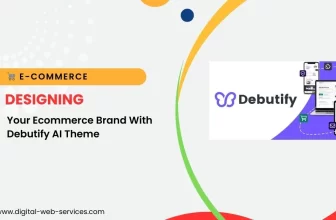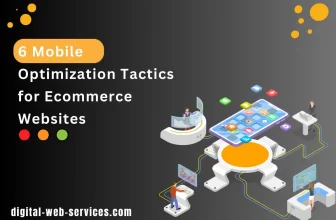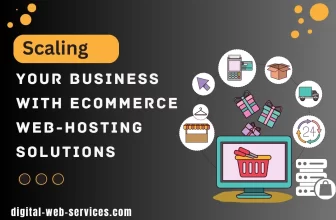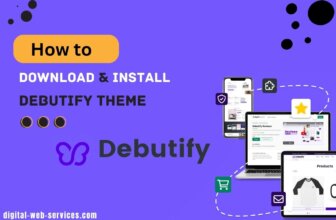
For modern retailers, being online is a must. Today, nearly 70% of people prefer to buy online, and eCommerce merchants will be the first research preference for more than 65% of shoppers.
That being said, the competition in the eCommerce industry is fierce. If you want to stand out from the crowd, you need to pay attention to changes, users’ behavior, trends, patterns, and provide a great shopping experience.
In this article, we’re offering 6 tips that will help you offer the best online shopping experience imaginable.
1) Product Pages Design Tips
Once your customers find the product they’re looking for, they need to be able to learn more about that product. When designing your product pages, you should strive to create an experience that resembles that of in-store shopping.
Use enough images- Bear in mind that with online shopping, customers can’t touch or feel the product, or see how it fits. That’s why you need to provide enough images that clearly show all the product’s aspects. Here are a few guidelines to help you out:
- Use large, high-quality images to grab the shoppers’ attention and show them what exactly they’re buying. Large images also let customers zoom in and examine the product in detail.
- Try to show the product from multiple angles and, if possible, provide a 360-degree view to provide an experience that resembles in-person shopping as much as possible.
- Use a white background to allow the product to stand out.
- Use videos to deliver plenty of information in a short period of time and showcase the products in use.
Provide detailed information- Besides visuals, another thing to pay attention to is a product description. Provide customers with details about the product to enable them to make an informed buying decision. Show product availability, size chart, dimensions, options for different colors or sizes, materials used, warranties, total cost, etc.
Rely on persuasive design- For instance, you can create a sense of urgency by showing scarcity. Show sale deadlines, display how many products are left, or hide out unavailable sizes. Scarcity is a great way to motivate shoppers to take action. Finally, display similar products that shoppers might also like based on past purchases or search history. These can be displayed in the shopping cart or on a product detail page to encourage customers to continue shopping.
Of course, creating great product pages requires lots of effort and patience, so if you feel that this isn’t your area of expertise, you can always hire a pro. Many business owners are aware that some things are best left to experts and prefer the peace of mind that choosing a good website design company brings.
There are factors to consider when choosing a web design company, such as the platform you use and your UX goals. For instance, if you use BigCommerce, it will probably be wise to choose a BigCommerce partner company certified by BigCommerce for their technical knowledge and excellent track record.
2) Pay Attention to Site Navigation
Navigation is all about how easily customers can move around your site and find what they are looking for without too much fuss. If your shopping experience isn’t smooth enough, chances are shoppers will get annoyed and leave. Here are some crucial aspects of eCommerce site design for smooth navigation you should keep in mind:
Product search- Make it easy for customers to find the product they’re looking for by placing the search box on each page. Ensure that the search box is located in familiar locations (the main menu, top center, or top right of the page), that it is clearly visible and easy to use.
Add an autocomplete feature- Suggesting products within the area that customers are already searching makes it easier for them to find what they’re looking for and increases your chances of making a sale.
Filter options- Allow customers to sort and filter search results based on different criteria (lowest or highest price, bestsellers, newest item, ratings, etc.).
Product categories- Show the set of categories that your store offers at the top level of navigation. Classify your products into categories and subcategories that make sense.
Quick view- The “quick view” option reduces the time to find the right product. Instead of trying to display all the product information, including a link to a separate product page where customers can view complete details.
Special offers- People are always on the lookout for deals, discounts, and special offers, so ensure that your exclusive offers are easy to notice.
3) UI Design Considerations
The overall atmosphere of your eCommerce website is the main driver of first impressions. Studies have shown that people only need 50 milliseconds to determine whether they like a website or not. To that end, here are some UI design tips to consider:
Follow your brand identity- Pick color schemes that reflect your brand and make sure the brand experience is consistent throughout the entire website, as well as across all channels.
Use familiar symbols- and icons to avoid confusing your customers.
Don’t over-design- Use high-contrast background and text colors to make the copy as clear as possible. Also, limit font formats like font face, colors, and sizes. If the text looks like graphics, people might think it’s an ad.
Avoid pop-up windows- Even if they contain important information, popups can be a distraction and shoppers are very likely to dismiss them right away.
4) Design for Trust
Despite the popularity of online shopping, many customers are worried about the privacy and protection of sensitive information. That’s why you need to assure them that your website will protect their personal data by providing a secure transaction. Here are some design tips that will help you communicate trustworthiness:
Show who you are- Include an overview of your eCommerce business, making sure to include general info, links to your social media pages, photos of founders and employees, contact info, return and refund policies, FAQs, etc.
Display product reviews- to help customers understand more about the product and alleviate any concerns they might have.
Add trust seals- to verify the security and legitimacy of your site. Using trust seals is a great way to assure customers that your transaction process is secure, which will provide a better UX and lead to more sales.
Implement an SSL certificate- and display SSL certificate badges to assure your customers that their data is protected. You can easily purchase SSL certificate for your website protection.
5) Design a User-Friendly Shopping Cart
The shopping cart is very important because that is where customers make the final buying decision. Here are several tips to help you design a user-friendly cart that encourages customers to complete their purchase.
Use a clear CTA- Use simple language and bright colors to make the checkout button visible and easy to use.
Make sure the cart can be easily edited- and that shoppers can change details such as color, quantity, or size without too much fuss.
Show product details- such as product images, names, colors, sizes, and prices to help customers remember every product. Link products in the shopping cart back to the product pages, so they can view more details if necessary.
Provide clear feedback- When a product is added to the cart, it should be confirmed clearly and immediately. Inadequate feedback can confuse shoppers.
Avoid surprising customers with unexpected taxes and shipping costs- Unexpected shipping costs are one of the main reasons buyers drop their carts, so make sure to show taxes and shipping options along with precise calculation of the costs.
6) Checkout Design for More Conversions
A well-designed checkout page will certainly contribute to more conversions, so here are a few tips to help you out:
Offer different payment options- to make it easier for customers to complete their orders but also to expand your customer base.
Don’t force customers to create an account- in order to buy from you. Offer them an option to buy as a guest or to register after completing the purchase, making sure to emphasize the advantages of registration (faster checkout due to saved personal information or access to special offers).
Keep things simple- Minimize the number of steps and fields required to complete the purchase. Ideally, you should design a single page checkout where customers can view their cart, as well as payment and delivery details.
Provide customer support- Provide a phone number or live chat throughout the entire checkout process, so that customers can get the answers to their questions right away instead of having to leave the checkout page and look for your contact information elsewhere.
Final Thoughts
The overall success of an eCommerce store depends on several factors such as brand recognition, product quality, customer service, trustworthiness, return policies, shipping costs, etc. However, thoughtful UX design plays an important role when it comes to providing customers with a smooth and satisfying shopping experience.
The 6 design tips in this article will help you design a great eCommerce site that converts visitors into buying customers but also makes them return and buy from you again.
Digital Web Services (DWS) is a leading IT company specializing in Software Development, Web Application Development, Website Designing, and Digital Marketing. Here are providing all kinds of services and solutions for the digital transformation of any business and website.










